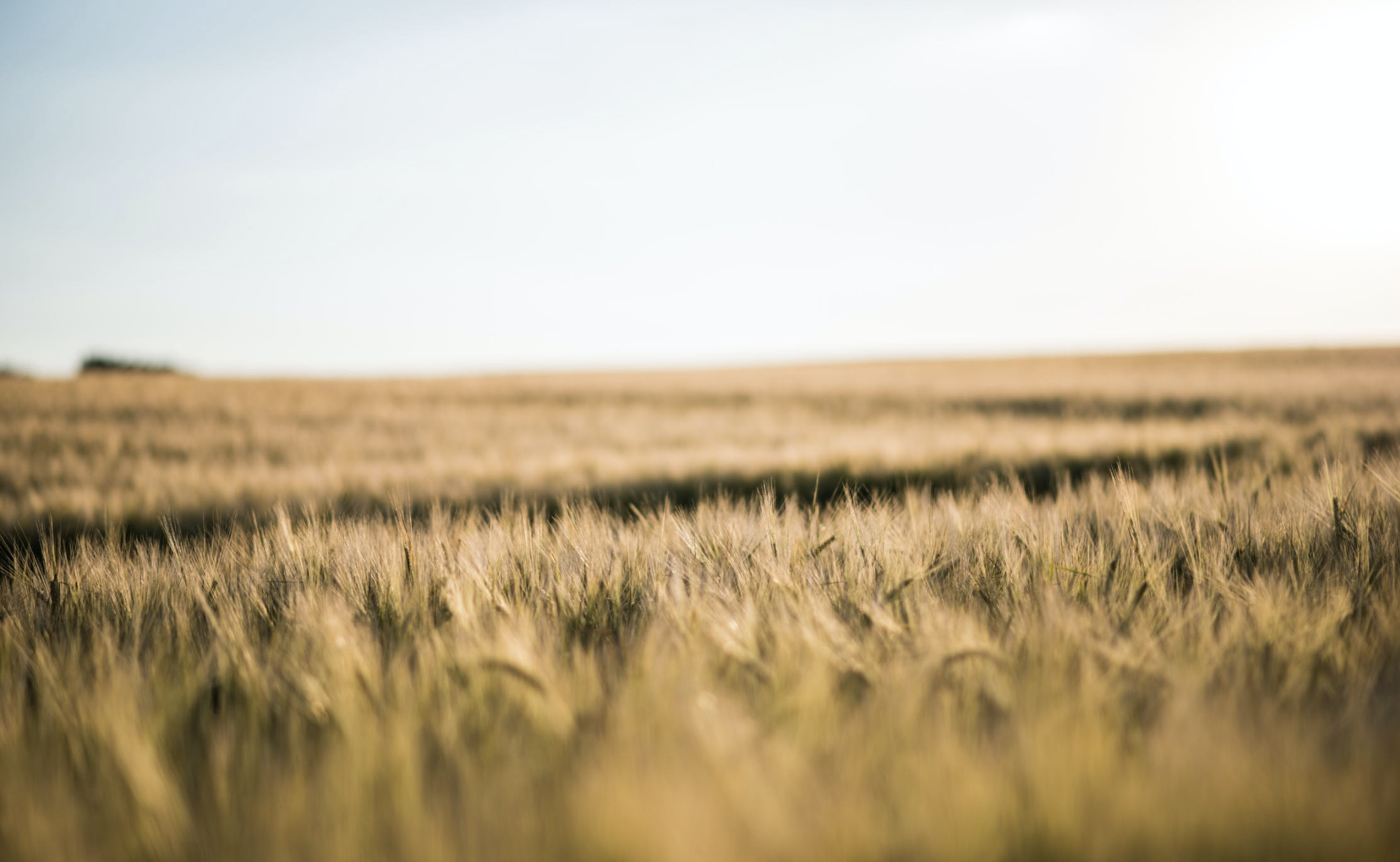Ukraine Invasion Leads to Spike in World Food Prices, Disruption of Conventional and Organic Farming
Ukraine Invasion Leads to Spike in World Food Prices, Disruption of Conventional and Organic Farming
This article originally appeared in Presence Marketing’s May 2022 Industry Newsletter
By Steven Hoffman
Russia’s invasion of Ukraine in February has become a costly war not only in terms of the devastating loss of lives, but, also, as Ukraine – known as the “world’s breadbasket” – is a major producer of conventional and organic crops such as wheat, barley, sunflower oil and more, it also has resulted in major disruptions to agriculture and trade, and now, the highest food prices the world has ever seen.
Photo: Wikimedia Commons
The United Nations Food and Agriculture Organization (FAO) in April warned that food prices could rise by up to 20% as a result of the conflict in Ukraine, raising the risk of increased malnutrition around the world, as well as social unrest. Tracking the world’s most-traded food commodities, FAO reported that food prices are at their highest since record-keeping began 60 years ago, jumping 13% in March, following February’s record rise.
According to the U.N.’s Food Prices Index, the prices for vegetable oils have risen 23%, while cereals were up 17%. Sugar rose 7%, meat was up 5%, while dairy, which has been less affected by the war, climbed 3%. Food commodity prices were already at a 10-year high before the war in Ukraine because of global harvest issues, the U.N reported.
Russia and Ukraine alone account for 30% of the world’s trade in wheat, 32% of barley, 17% of corn, and over 50% of the world’s market for sunflower oil and seeds. In fact, Ukraine’s flag in part represents blue skies over fields of wheat. And, as the war has choked off supplies from Ukraine, the world’s biggest exporter of sunflower oil, that also means the costs of alternatives have climbed.
Ukraine Planting Season Disrupted
As the war drags into Spring, and with Russia’s ongoing campaign targeting agricultural zones to the east, there’s a concern about whether Ukrainian farmers can plant much of anything this year. And if they do get their crops in the ground, production could be limited due to scarcity of seed, fertilizer, fuel and other inputs, much of which comes in from port cities including Mariupol, which are under siege. Ukraine alone exported more than $27 billion in agricultural products to the world in 2021, NPR reported.
According to Jörg-Simon Immerz, head of the grain trading at BayWA, Germany’s largest agricultural trading group, “Zero grain is currently being exported from the ports of Ukraine—nothing is leaving the country at all.” In addition, Deutsche Welle TV reported that since the invasion began, up to 300 ships have been stopped by Russian forces from departing the Black Sea, “leaving one of the key global trade routes for grain virtually blocked.”
The longer the war goes on, the more the impact on food exports will affect the world’s poorest countries. Many nations in Africa and the Middle East are largely dependent upon wheat imports from Russia and Ukraine; Lebanon gets 80% of its wheat from Ukraine, while Egypt gets 80% of its wheat from Ukraine and Russia. Somalia and Benin are 100% reliant upon wheat from these two nations currently at war. Deutsche Welle TV reported that the wheat shortages from Ukraine are being especially felt in eastern Africa where the price of bread and sunflower oil have more than doubled since the war began.
War Drives Food Inflation; Low Income Households Disproportionately Affected
Lower income households throughout the world, including the U.S., are being disproportionately affected by the drastic rise in food prices, triggered by two years of economic and supply chain disruptions resulting from the COVID-19 pandemic and exacerbated today by the Russia-Ukraine conflict.
According to Consumer Price Index data released in April by the U.S. Bureau of Labor Statistics, food-at-home prices rose 10% over the past year – the fastest pace since March 1981. Food and energy costs drove inflation to 8.5% in March compared to the same month a year ago, marking the highest rate in more than 40 years as consumers continue to feel the pinch of higher prices.
Meanwhile, grocers have tried to keep price increases from reaching consumers on such staple items as bread, meat and eggs, however, that strategy is becoming increasingly difficult, reports Food Dive. As a result, many consumers are opting for cheaper products over brand loyalty.
Analysts at Bank of America on April 21 predicted the impact of the Russia-Ukrainian conflict has yet to be fully felt in grocery stores. “Looking ahead, we think that consumers will continue to feel the pinch of elevated food inflation,” the analysts wrote. “While there has been a lot of attention on the shock from the Russia-Ukraine conflict, we believe that it is too early to see the impact at the grocery store…rather, it should lead to sustained price increases later this year.”
The Bank of America analysts reported that they expect U.S. food inflation to reach 9% by the end of 2022.
Fortune Magazine reported that Bank of America’s analysts noted that farmers, too, are dealing with spikes in the cost of inputs including fertilizers and pesticides, which have increased 50% in the past year alone, based on U.S. Bureau of Labor Statistics Producer Price Indexes. Russia was one of the world’s leading exporters of fertilizers in 2020, including urea and potash, according to the Observatory of Economic Complexity, and fertilizer prices have also been fueled by higher costs of natural gas, used in the production of nitrogen-based fertilizers.
“There are signs that companies are passing through higher costs,” the Bank of America team said, according to Fortune. “Margins look to be growing on both the wholesale and retail level, suggesting that companies have regained pricing power and are comfortable letting the consumer eat higher costs instead of them.”
Ukraine’s Organic Farming Regions Are Under Occupation
Ukraine is one of the world’s leading producers of organic crops. According to the European Commission, the country was the largest exporter of organic products to the EU in 2019, and the second leading exporter of organic products in the world, out of 123 countries.
In 2020, there were 462,225 hectares (1.1 million acres) of organic land in Ukraine, reported Organic Info Ukraine. However, much of the land under organic production is in areas where there are currently hostilities or occupation. “Since 24 February 2022 (the beginning of Russia’s full-scale invasion of Ukraine) the organic sector as well as the entire agrarian industry have been suffering from aggression. The biggest problem in many regions is access to land.” The Kherson region, for example, which is Ukraine’s largest organic region, is almost completely occupied by Russian troops, the organization noted.
Exports notwithstanding, humanitarian concerns also revolve around Ukraine’s farmers and the country’s ability to feed itself during the war. “Ukraine is a leading global supplier of agricultural products and exports a large amount of organic produce to different countries in Europe,” the Research Institute of Organic Agriculture (fiBL), based in Switzerland, said in a statement issued in mid-April.
“At the moment, FiBL and its partners (Organics International, Helvetas, and IFOAM Organics International) are looking into how they can adjust their project activities in Ukraine to meet the current needs of the Ukrainian organic sector. This is important to ensure that people of Ukraine have access to healthy nutritious food grown sustainably and that (organic) farmers do not lose their livelihoods. We are currently working with Ukrainian organic stakeholders and partners to ensure they can continue to grow and supply food and feed – now and in the future,” fiBL said.
The international organic food and agriculture community, including fiBL, IFOAM Organics International and others, is calling on its constituents to support the organic farming sector in Ukraine. Organic Info Ukraine published a “Statement on the Situation in the Ukrainian Organic Sector,” along with information on how to support organic producers and organic stakeholders in Ukraine during these critical times. Learn more and take action here.
# # #
Steven Hoffman is Managing Director of Compass Natural, providing brand marketing, PR, social media, and strategic business development services to natural, organic, sustainable and hemp/CBD products businesses. Compass Natural serves in PR and programming for NoCo Hemp Expo and Southern Hemp Expo, and Hoffman serves as Editor of the weekly Let’s Talk Hemp Newsletter, published by We are for Better Alternatives. Contact steve@compassnaturalmarketing.com.
Argentina Becomes First Country to Approve GMO Wheat
Photo: Pexels
This article originally appeared in Presence Marketing’s November 2020 Newsletter
By Steven Hoffman
Among the first countries in the world to use genetically modified (GMO) crops, including soybeans, corn and cotton, on a large scale in agriculture, Argentina on October 9, 2020, announced it has now become the first nation to approve the use of GMO wheat. The move prompted criticism from Argentina’s agriculture export industry, reported Reuters.
The country approved HB4, a wheat variety genetically engineered to be drought resistant and developed by agricultural biotechnology company Bioceres SA, based in Argentina.
To date, no other country has approved the importation or production of GMO wheat, due to consumer concerns, as wheat is grown primarily for human consumption. According to Reuters, Bioceres said it will only begin marketing the GMO wheat once it is approved for import by Brazil. Brazil is currently the largest importer of wheat produced in Argentina.
“I will not plant HB4 wheat, and I would not recommend that anyone else does, until it has been approved by importing countries. It seems risky in the sense that we could end up with crops that no one wants to buy,” Francisco Santillan, who manages a number of farms in Argentina, told Reuters.
Dave Green, EVP of the Wheat Quality Council, a U.S. trade group, told Reuters, “I don’t hear anything about GMO wheat efforts here. None of our export customers want any.”
Argentina is one of the world’s largest producers of GMO soy and it is among the nation’s leading exports. However, the BBC reported in 2014 that massive synthetic pesticide use in the country as a result of the explosion of GMO agriculture may be linked to skyrocketing rates of cancer and birth defects in the country.



